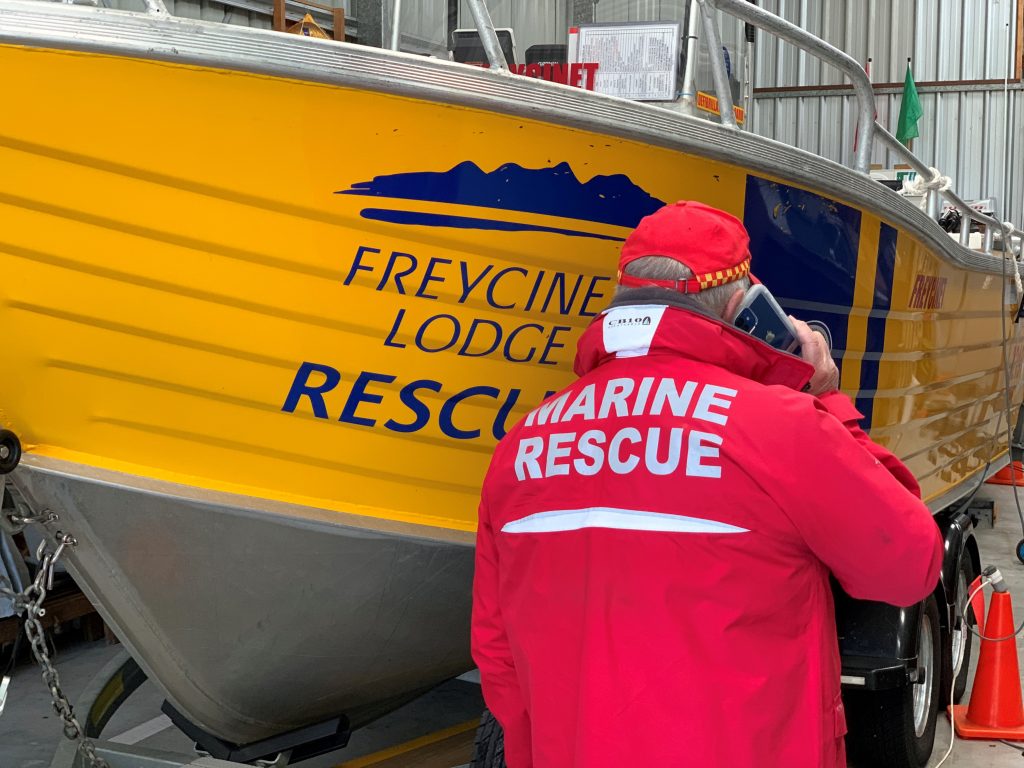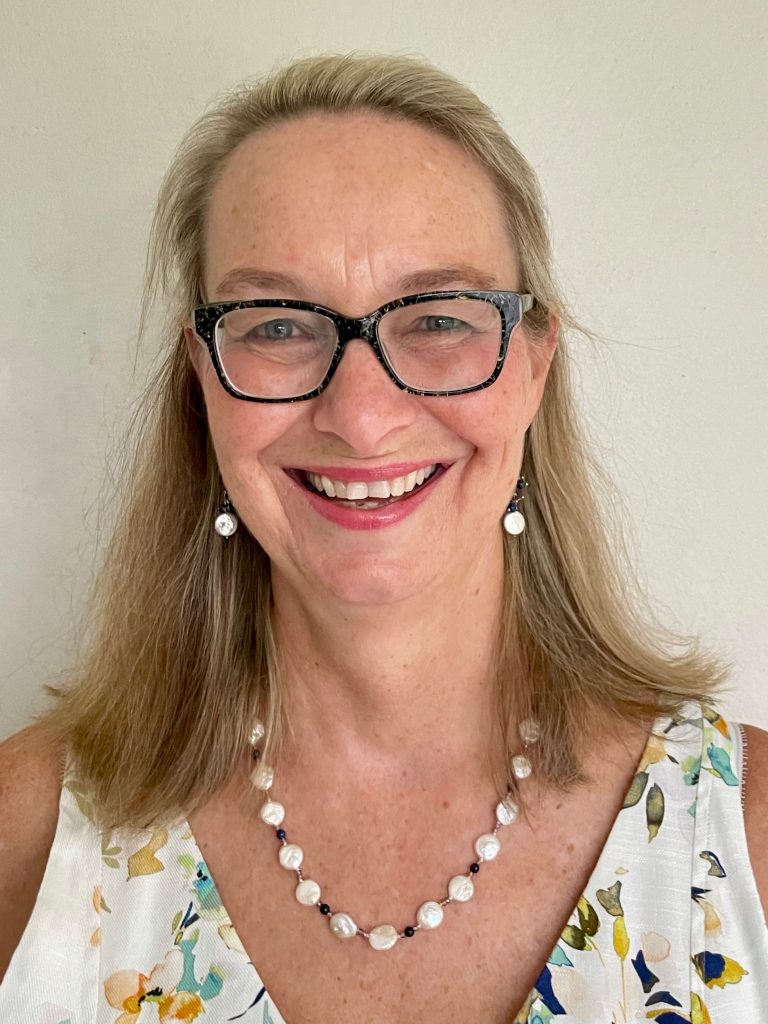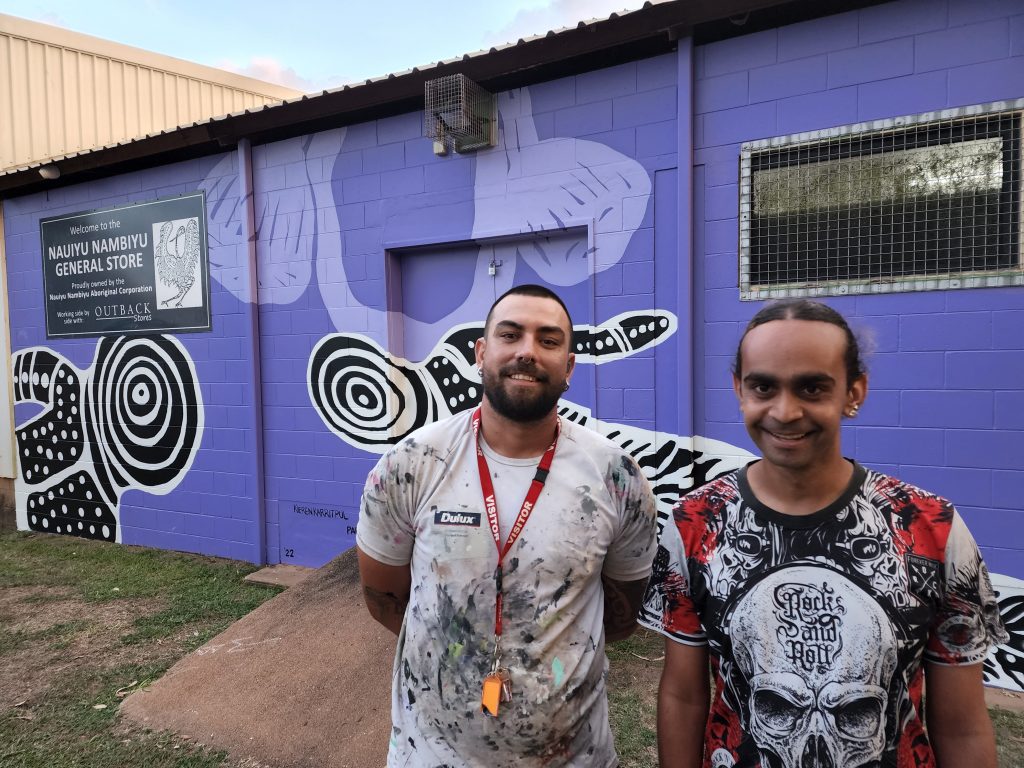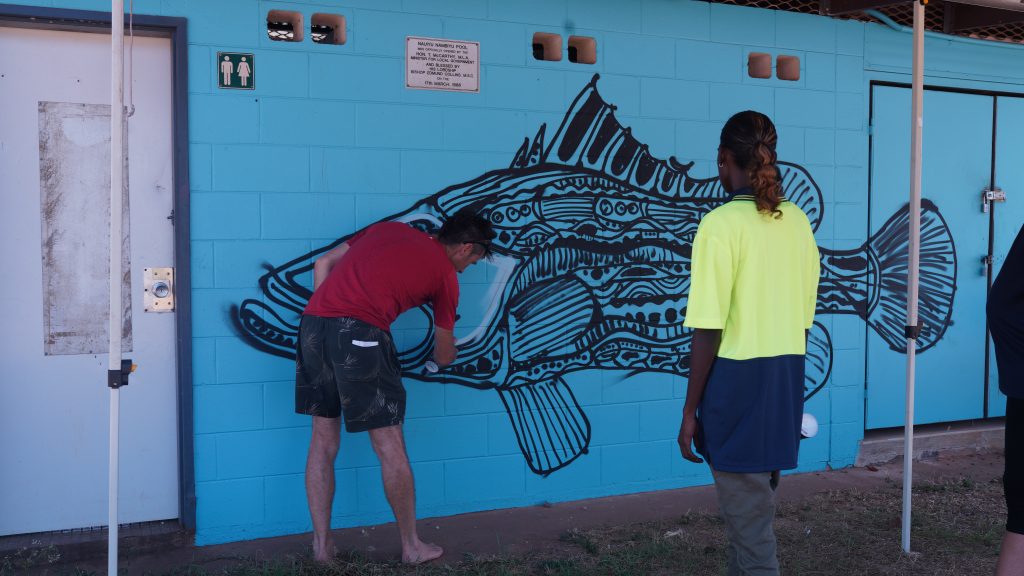Foundation for Rural & Regional Renewal (FRRR)
Access to reliable, high quality mobile phone coverage is important for everyday activities. But it is critical when it comes to the lifesaving activities that the Freycinet Volunteer Marine Rescue Association undertake on a regular basis.
Based in Swansea on Tasmania’s east coast, the Association’s base is located on low lying Council land, which impacts the mobile phone signal from the local Telstra tower as it requires a direct line of sight for best coverage. The building is steel framed and clad, further blocking the already weak mobile signal. This meant members had to go outside of the building to obtain a mobile signal, which at best was two bars. Going outside to check the Bureau of Meteorology website prior to launching a rescue vessel involved waiting several minutes to access a signal and the important weather data.
COVID exacerbated the need for a mobile booster to provide stronger and more reliable mobile coverage as member training, which the Australia Maritime Safety Authority requires to be to the same standard as commercial mariners, had to move to Zoom sessions. Zoom provided additional benefits by allowing members the opportunity to remain connected and still have timely input into the Association’s activities.
Another challenge was that family members could not contact volunteers if they were inside the building. If there was an incident or accident while working within the building, there was also no way to make an emergency call without going outside – potentially leaving an injured member unattended.
A $2,244 grant from FRRR’s Strengthening Rural Communities program, funded by a private donor, supported the installation of the mobile booster. The project, described by the Association as ”one of our best projects in over 20 years of operation”, resolved all the issues of being able to access reliable, high quality mobile coverage in the Association’s building.
Results after installation showed 100% signal strength inside the building, providing a safety net for volunteers working on site and enhancing community safety, as information on emergency situations can now be accessed without delay.
For more inspiring stories like this, head to our FY 2021/22 Annual Review.

Malak Malak People
Nauiyu is an Aboriginal community of 444 people in the Daly River region in the Northern Territory. Their place, around 2.5 hours drive from Darwin, is said to be one of the best Barramundi fishing spots in the country, and locals hold a strong connection to their land and culture. Despite the idyllic description, Nauiyu experiences alcohol and other drug misuse within its small population. Yet there is strong community support for real solutions that respond to community needs, are culturally appropriate and involve building local capacity and furthering local leadership.
Enter Red Dust. Founded by John Van Groningen, the organisation was born out of his work with youth in the Aboriginal community of Lajamanu in 1984. Today, it delivers innovative health promotion and community development programs that are co-designed through trusted relationships with remote First Nations communities. For the people of Nauiyu, a community-based diversion program celebrating cultural identity and pride would provide a means to connect and engage the vulnerable community.
Consulting the community, Red Dust’s Local Drug Action team coordinated the Red Dust Community Art Collaboration project with local organisations. Green River Aboriginal Corporation identified sites for the murals; Merrepen Arts provided the connection to local artists and culturally relevant iconography; and Ironbark provided access to volunteers and project participants. Proper Creative, based in Darwin, was commissioned to paint the murals in conjunction with local project participants.
With collaboration between local artists, community members, young people, and service providers, and a $5,000 Strengthening Rural Communities grant funded by the Tim Fairfax Family Foundation & Pinnacle Charitable Foundation, Red Dust will deliver three large murals. The project will not only create beautiful public spaces and bring the dreaming of the Nauiyu community to life, it will also support the health, wellbeing and future opportunities for local youth.
The images below feature the impressive first mural, featuring Daly River artist Kieren Karritpul. https://www.reddust.org.au/blog-posts/ldat-2022-05-nauiyu
Mary Jung has a dual role with Pinnacle Investment Management – as the Community Investment Manager for the company, and as the CEO and Company Secretary of the philanthropic arm of the company, which is the Pinnacle Charitable Foundation.
The Pinnacle Charitable Foundation first supported FRRR’s programs in 2011. At that time, it was known as the Wilson HTM Foundation, and donated to the Repair-Restore-Renew programs to support mid-long-term disaster recovery. The Foundation has continued to support a number of programs over the years, and has recently committed a generous $150,000 across FRRR’s programs. The Foundation’s vision is to foster ‘an increasingly clever, creative and compassionate Australia’.
We caught up with Mary to ask a few questions about the partnership with FRRR, and their views on giving in general.

Can you tell us a little bit about Pinnacle Charitable Foundation, its background and how it sits alongside the business?
The Pinnacle Charitable Foundation has been with Pinnacle since 2016, when Pinnacle became the listed entity forged out of Wilson HTM Limited. The Foundation became aligned with Pinnacle’s business at the end of 2016, starting a new life building on a wonderful legacy of partnerships – including with FRRR. Today, it is very intrinsically linked with the Pinnacle Group, including its affiliated fund managers. They engage closely with the Foundation, which is a central part of a broader sustainability agenda that the company focuses on. It is a very strategic and intrinsic part of the business. Pinnacle has a mission to enable better lives through excellence in investing. And we feel that the Foundation enables better lives through investing in tremendous not-for-profits, who can help communities that we can’t reach.
Why do you believe it’s important to support remote rural and regional communities?
The support to remote regional and rural communities across Australia is really essential. I mean, they are the lifeblood of Australia, but they’re not always communities that we can reach effectively. Pinnacle’s offices are predominantly on the eastern seaboard, and whilst the Group certainly has clients from across the length and breadth of Australia, that’s not the same as being able to reach them and to touch them and to work with them. So, we feel that working through conduits and partners such as FRRR is incredibly important, and it’s something that we’re also incredibly proud to be able to do.
Can you tell me about the interest in supporting flood and bushfire affected communities in particular
Pinnacle as a company – and the Pinnacle Charitable Foundation as its philanthropic arm – tries to be very strategic in its giving, but also very responsive to natural disasters, particularly within Australia. So, flood and fire are, of course, incredibly powerful and impactful across Australia and becoming more frequent than anyone would like to see. So we do believe that it’s important to be nimble and quick and react to those events, and to join in with our employees. We do a lot of matched giving programs; we have a workplace giving program, we run special appeals. And we also believe it’s important not just to support the emergency relief, but to work with entities such as FRRR.
I love that phrase about FRRR rebuilding the social fabric; we often align our giving to the longer-term recovery, because of course, that’s what takes so much time once the bricks and mortar have been rebuilt.
You’ve touched on it, but what was it about FRRR that made you choose to partner with us to work on this important issue?
The Pinnacle Charitable Foundation and its predecessor, Wilson HTM Foundation has always loved the philosophy of FRRR.
We first found FRRR over 10 years ago, when we were looking for a partner who could help us give some disaster relief that was going to be long-term, and the FRRR approach of coming in a little bit later / a little bit down the track resonated with us. We love the idea of community-led, community-driven, community-initiated activity.
And again, we can’t often reach the small grassroots communities, and some don’t have DGR-1 status, so we have worked with FRRR as an auspice entity to help us reach some communities. The recent discussion this year of adapting and evolving and becoming stronger and more vibrant, I think is exceptionally powerful and relevant.
Can you tell us a bit about the Foundation’s other philanthropic activities and partnerships?
The Pinnacle Charitable Foundation works to match and meet the needs of our affiliated fund managers and strategically partner with entities and causes that resonate with them. But at the same time, we have built a framework around key themes with six dedicated focus areas. Within those, the most prominent one is mental wellbeing and mental health, where we partner with R U OK?, ReachOut and batyr. We’ve been on that journey for quite some years actually, long before the pandemic evolved. FRRR sits within that theme, but it’s also a natural fit with our environmental focus, which links closely to our broader sustainability goals and the ESG work that all our fund managers take incredibly seriously.
The other area that we’ve been working with for a number of years, again well before the pandemic, is domestic and family violence. We do a lot of advocacy work in supporting legislative change through a partnership with Full Stop Australia, as well as facilitating legal help and legal advice to help sufferers access courts and jurisdictions and legal options. Another key area is around children facing acute and systemic disadvantage, as is medical research. We work with CMRI for very young children and congenital genetic defects. And we work at the other end of the spectrum with Alzheimer’s research, with the Australian Alzheimer’s Research Foundation based in Perth. We also work in the kindness area – we work with COVID kindness, as we call it, with the Kindness Factory with a school’s based Kindness Curriculum, and we work with the YWCA to help women over 50 who are homeless, which is the fastest growing cohort in Australia. So, six areas, quite broad, but it gives us a thematic scope that we can stick to.
Do you have any advice to other philanthropic organisations or individuals, when choosing a not for profit to partner with?
When we’re looking for not-for-profit partners, apart from the due diligence, and the checking of the actual factual parameters around how they can work with us, I think it’s about being very clear as a funder on why you’re doing it, how it fits, and whether the values are aligned.
I know that sounds logical, but I think values alignment builds trust – and trust has been the incredible ingredient that I think has been so important in the last two years. I’ve certainly found that having enormous trust with our partners has meant that when inevitably, with COVID, they’ve had to chop and change and swap their priorities and their activities in their initiatives, it’s been a happy conversation and an open conversation, not one that’s been full of angst or any sense of duress. So, I think that gets back to values, which gives you that trust. And I think the other thing, too, is to look at it through a lens of flexibility and long term.
I really think that the long-term aspect of giving is incredibly important. And I think for both parties, I think if you’re going to invest and you’re going to make an impact, you need to have time to do that.
.





